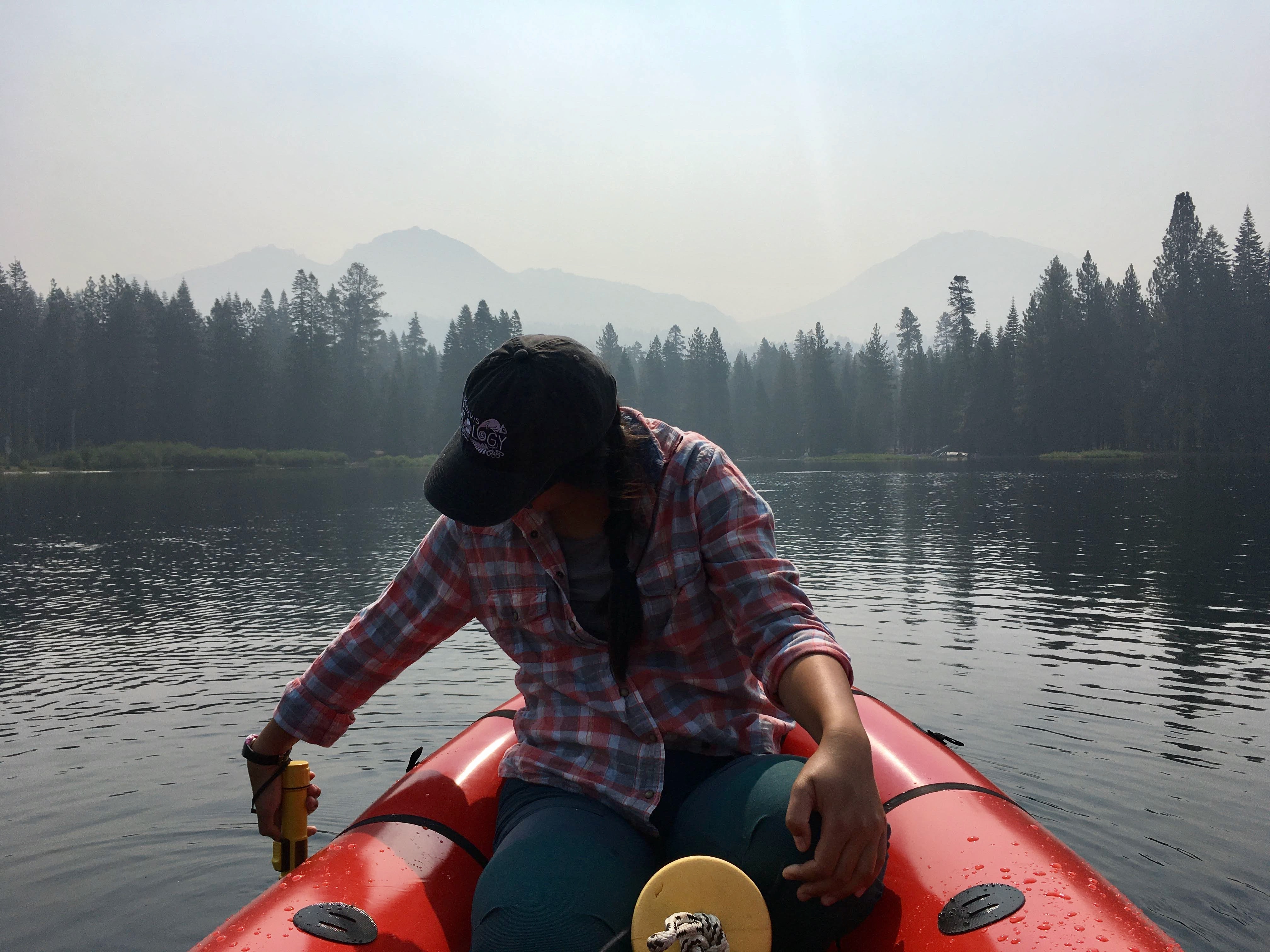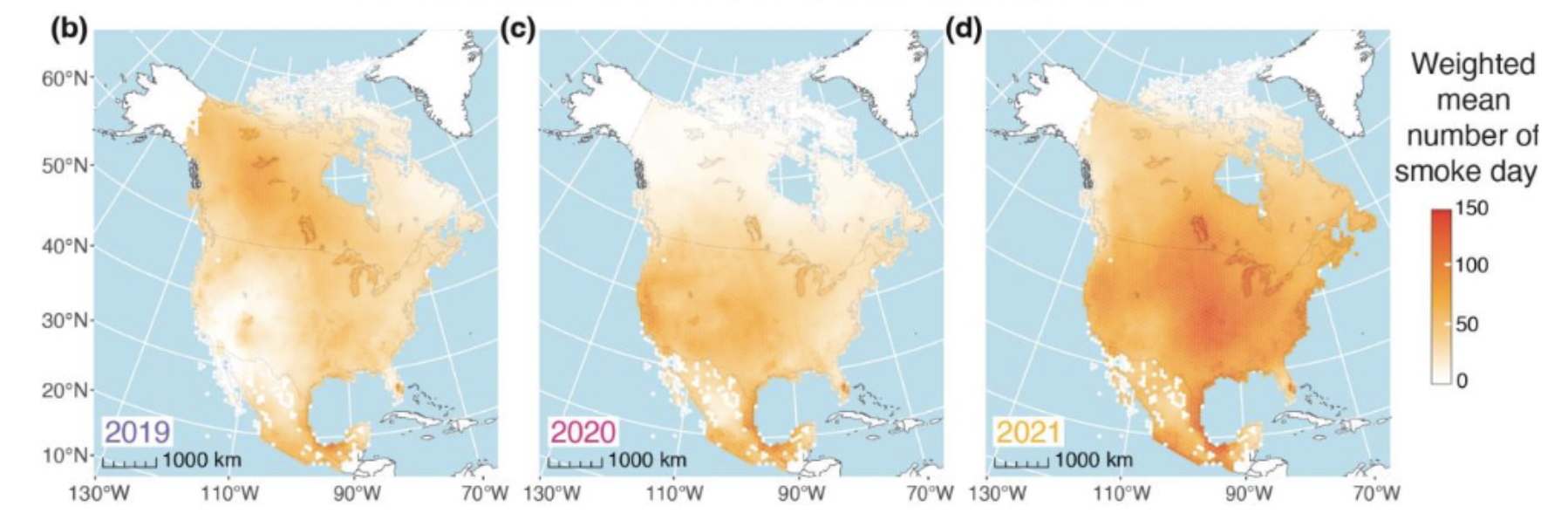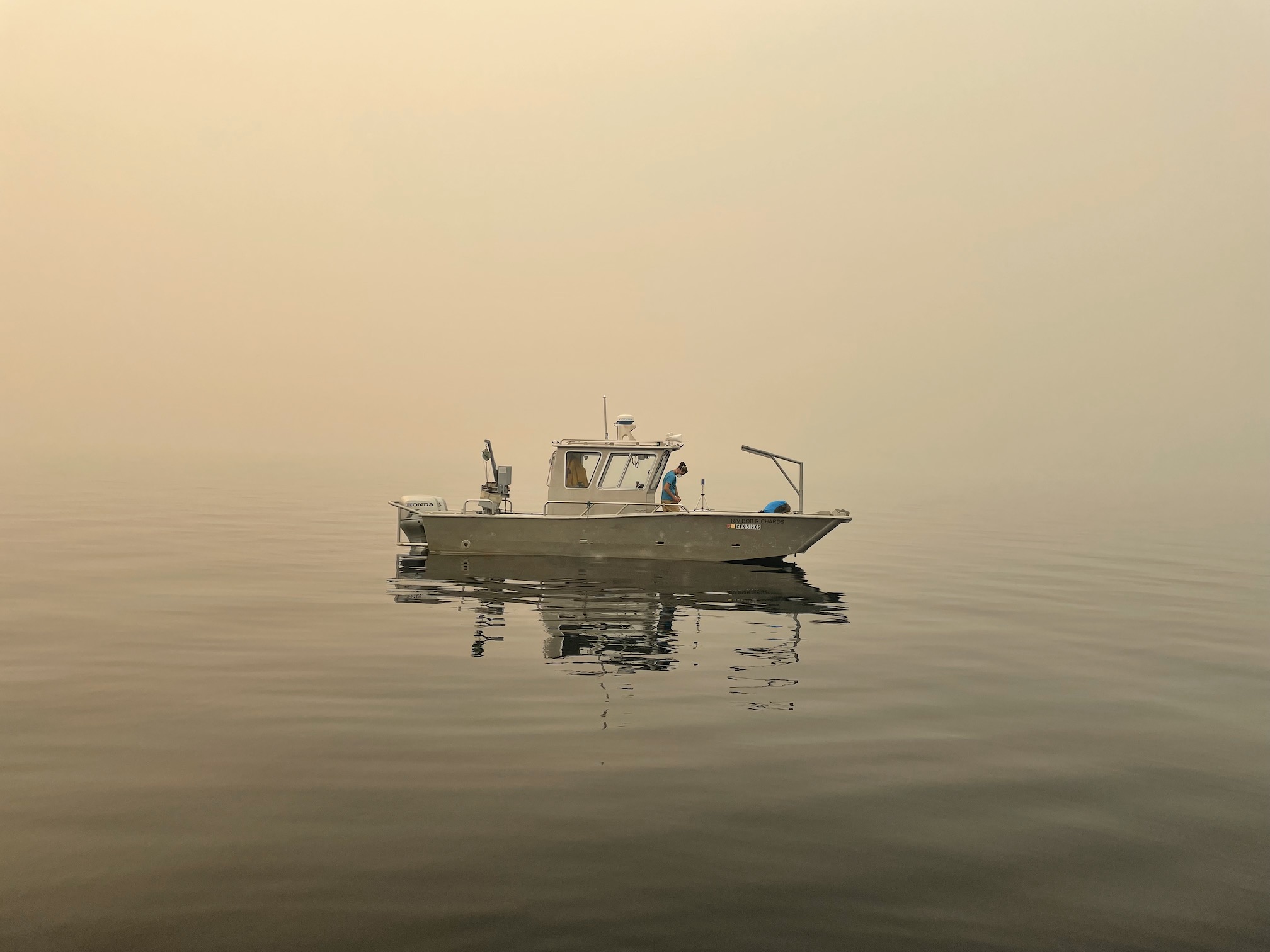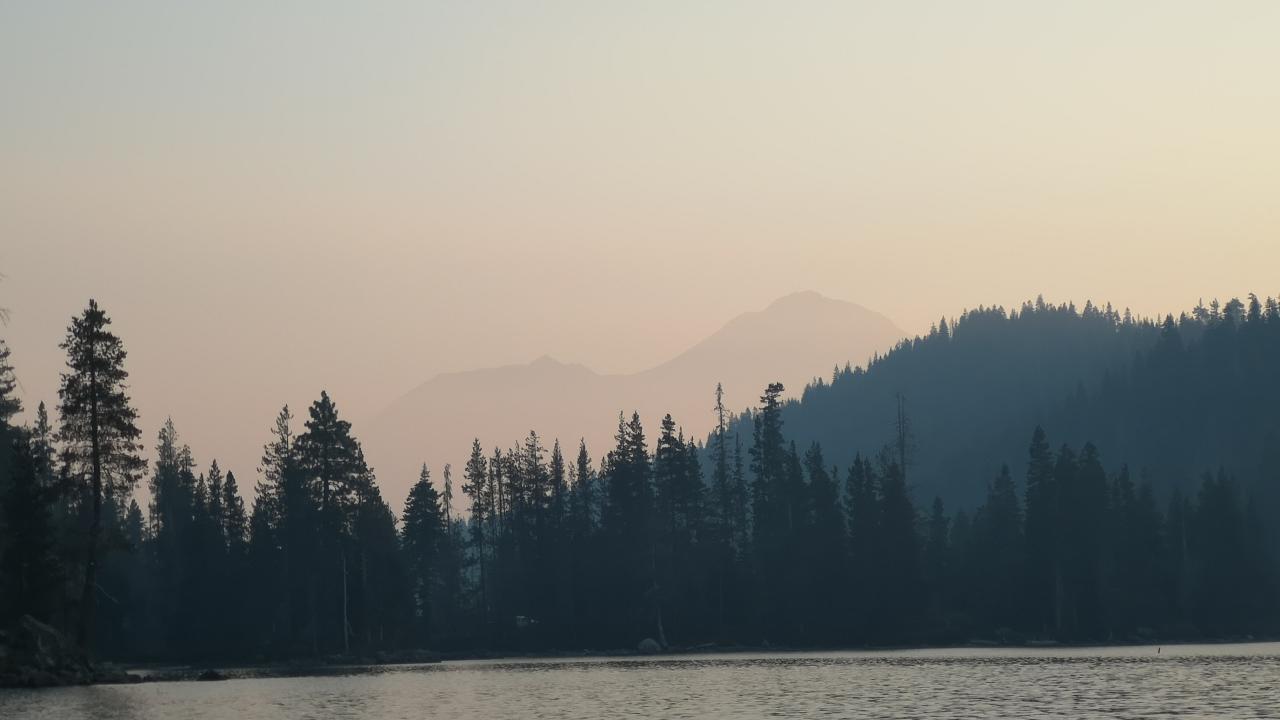Where there’s smoke, there’s not necessarily fire.
Wildfire smoke, sometimes drifting from hundreds of miles away, touched nearly every lake in North America for at least one day per year from 2019 to 2021, according to a study from the University of California, Davis.
Even more significantly, the study, published in the journal Global Change Biology, found that 89% of the lakes in North America experienced smoke for more than 30 days during each of those three years of intense wildfire activity.
“That was surprising, even to us,” said lead author Mary Jade Farruggia, a Ph.D. candidate in the UC Davis Graduate Group in Ecology and the Department of Environmental Science and Policy. “With this study, we quantified for the first time the scope of the smoke problem. We show that it’s not just a widespread problem, but one that is long-lasting in a lot of places.”

Introducing the ‘lake-smoke day’
The study introduces a concept the authors call the “lake-smoke day” to serve as a metric for monitoring smoke prevalence at lakes. It refers to the number of days a lake is exposed to smoke in any given fire season.
A lake-smoke day metric could help establish a baseline to better understand the extent and intensity of events such as 2023’s persistent blanket of wildfire smoke from Canada that reached the Northeastern United States and crossed the Atlantic Ocean to Western Europe.
The authors established the metric using a hazard-mapping product from the National Oceanic and Atmospheric Association that quantifies smoke density based on a combination of satellite imagery and ground-based measurements. They also analyzed databases of about 1.3 million North American lakes larger than 25 acres to learn the prevalence and duration of exposure.
“Smoke is widespread, and smoke is pervasive,” said senior author Steven Sadro, a UC Davis limnologist and associate professor in the Department of Environmental Science and Policy. “We knew that by looking out the window and looking at satellite images we see almost every summer. Now we’re starting to quantify it.”

The science of smoke
While wildfire has been a consistent and even healthy presence on the landscape for millions of years, the frequency and severity of catastrophic wildfires in recent years is novel compared to previous decades. For that reason, the impacts of smoke on natural systems are understudied.
This study is part of a growing, broader effort to examine how smoke affects lake environments. The authors worked with the Global Lakes Ecological Observatory Network, or GLEON, to create a working group to share, understand and communicate these impacts.
They reviewed the known and theoretical impacts of smoke on lakes, such as how smoke can change the amount and composition of solar radiation that reaches lakes. Smoke and ash also can alter the deposition of carbon, nutrients or toxic compounds. Yet these impacts tend to be lake-specific and highly variable.
“We just don’t know yet how smoke affects food webs, lake ecology or what the future of these systems will be if there’s an increase in lake-smoke days,” said Farruggia. “I think quantifying the scope of the problem is really the first step. We’re pointing out that this is something we need to manage for across the globe, and not just areas affected by wildfire.”

The research was funded primarily through the National Science Foundation. The authors emphasize the work was a “massive team effort.” Its 22 authors span disciplines ranging from chemistry and atmospheric science to geography and ecology.
Media Resources
Media Contacts:
- Mary Jade Farruggia, UC Davis Environmental Science and Policy, mjfarruggia@ucdavis.edu
- Steven Sadro, UC Davis Environmental Science and Policy, ssadro@ucdavis.edu
- Kat Kerlin, UC Davis News and Media Relations, 530-750-9195, kekerlin@ucdavis.edu
